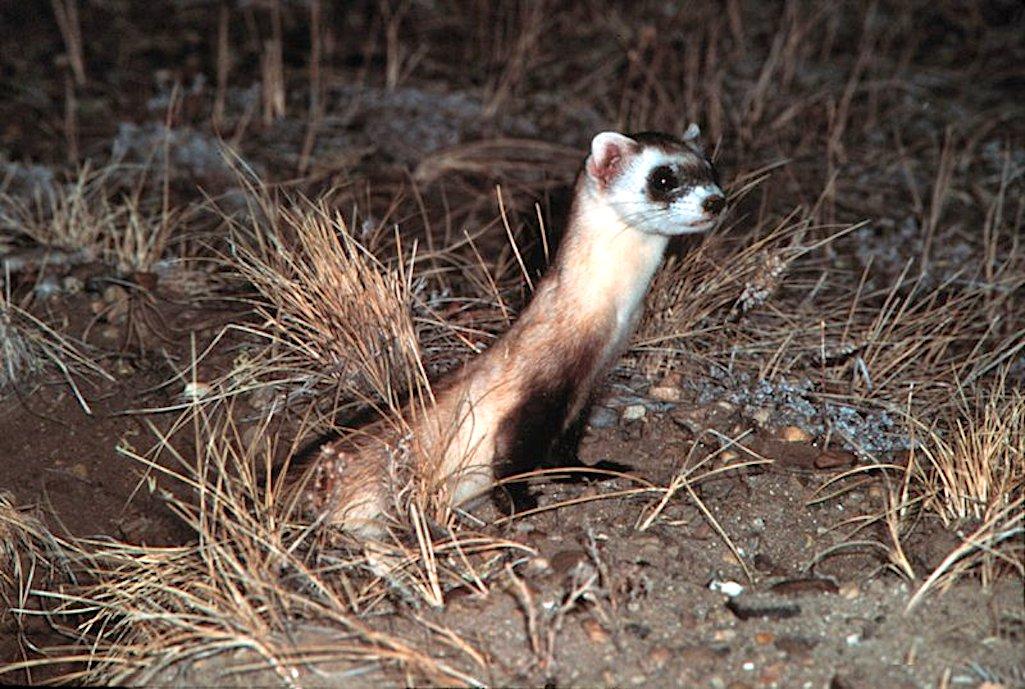
The U.S. Fish and Wildlife Service is proposing to release black-footed ferrets at Petrified Forest National Park/USGS, Dean Biggens
Petrified Forest National Park in central Arizona is being considered by the U.S. Fish and Wildlife Service as a release point for endangered black-footed ferrets.
The national park is one of four locations in Arizona where the agency is proposing to release the rare mammals once their prey, prairie dogs, have increased in number in those areas.
“Black-footed ferrets are not just exceedingly cute, they also play a fascinating evolutionary role as specialized predators of prairie dogs,” said Michael Robinson at the Center for Biological Diversity. “Returning these animals to a much wider area represents a welcome commitment to increase the numbers and distribution of prairie dogs and start healing our much-abused arid grasslands.”
A small population of black-footed ferrets was first reintroduced to northern Arizona in the 1990s. The Fish and Wildlife Service's proposal, announced last week, could increase the eventual range of the ferrets to more than 40 million acres of potential habitat elsewhere in northern Arizona, along with eastern and southeastern Arizona, northwestern New Mexico and southeastern Utah.
The first four potential reintroduction sites would be in the Williams and Tusayan ranger districts of the Kaibab National Forest, the CO Bar Ranch, Petrified Forest National Park, and near a reservoir called Lyman Lake. A fifth area, on Las Cienegas National Conservation Area, supports a reintroduced prairie dog population that must still grow substantially before it could support ferrets.
The federal proposal would also facilitate reintroduction to sovereign Tribal lands of the Hopi Tribe, Hualapai Tribe and the Navajo Nation, if any of these entities decide to reintroduce ferrets. The Navajo Nation is the largest Indian reservation in the United States, comprising more than 17.5 million acres in Arizona, New Mexico, and Utah.
Comments are being taken on the proposal through August 24. You can find a comment button at the top of this page.
“Forty years ago just 18 individual black-footed ferrets survived,” said Robinson. “Thanks to the Endangered Species Act, hardworking biologists, and a forward-thinking Biden administration, we can now begin to envision the ferrets sufficiently recovered to never again teeter on the brink of extinction.”



Add comment